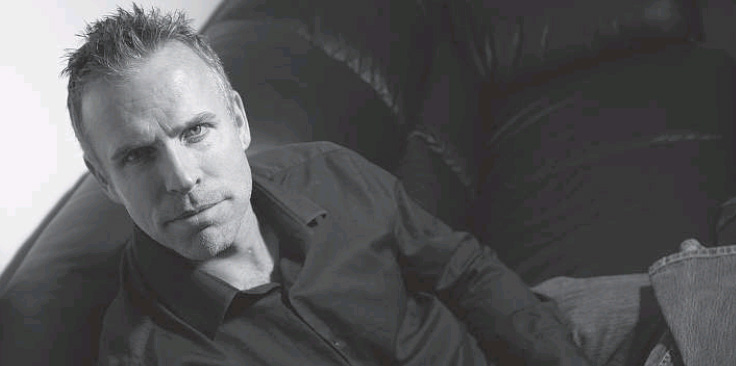Backup drive protects everything on your computer
Matt Hartley
Sun

Bryan McLeod puts the emphasis on Clickfree’s easy backup rather than pure storage.
Bryan McLeod just might be the best insurance salesman in the tech industry.
For the sake of his company, Storage Appliance Corp., he had better be.
Mr. McLeod knows the technology his firm sells isn’t something the average person tends to think about on a daily basis. After all, computer backup drives are hardly a sexy business.
Like fire or flood insurance, he knows that just because people don’t tend to think about backing up the thousands of digital pictures, songs and movies stored on their computer’s hard drive, it doesn’t mean they don’t need to, or want to.
“It’s not like when you buy an iPod,” he said. “With an iPod, you do the setup process… and then all of a sudden you’re listening to beautiful music.
It’s great. There’s instant gratification.
That’s how people think. What do you get when you back up? All you get is peace of mind. It is truly insurance.
You’re protected for ‘someday.’ ” In this case, the insurance Mr. Mc- Leod is selling arrives in the form of the Clickfree Automatic Backup, a line of computer storage products designed to make the backing up of digital files on one’s computer as simple and painless as plugging in a lamp.
Simplicity is the “secret sauce” that drives Clickfree, Mr. McLeod says.
Like the product’s name implies, users don’t need to do anything but plug one of the company’s drives into their computer via a USB connection, and the software on the device automatically begins the backup process and starts transferring files.
That dedication to simplicity is quickly gaining attention from some of the biggest names in the consumer electronics retail space. Clickfree devices are now available in 25 countries and more than 10,000 stores, including Best Buy and Office Depot in the United States and Future Shop and Henry’s outlets in Canada.
While there are dozens of technology heavyweights – including Hewlett- Packard, Seagate and Western Digital – building storage devices, Mr. McLeod contends Clickfree can differentiate itself by pushing the benefits of easy backup, rather than pure storage.
However, retailers not only need to be convinced to carry the Clickfree devices, but also to charge $30 to $40 more than similar-sized computer storage devices sold by competitors, a data point he admits is the biggest stumbling block to getting his devices on to store shelves. (For example, a 250-gigabyte Clickfree drive costs about $140) Of course, Mr. McLeod’s personal track record helps. This isn’t the first time he’s launched a device into a crowded market with a price tag well above that of his competitors.
Before he invested in Clickfree – which was founded by Toronto entrepreneur Ian Collins in 2005 – Mr. Mc- Leod was chief executive of a Torontobased company that made universal remote controls for entertainment systems, called Harmony Inc.
Prior to Harmony, universal remote controls often were difficult to program and cost as little as $10. But by creating a remote control that could download information about the different devices in a user’s home entertainment system over the Internet, Mr. McLeod and his team were able to sell Harmony remotes for anywhere from $100 to $500.
“It seemed like the higher we went in price point, as long as we added the proper features into it like colour LCD screens… the more units we sold, because it was just a way better experience that actually was easier to program and could control your entertainment system,” he said.
Eventually, Harmony was sold to Swiss computer peripheral giant Logitech SA for US$29-million in 2004.
After spending three years with Logitech running the Harmony business, Mr. McLeod left and took over at Storage Appliance Corp.
“One of the things I’m always interested in is trying to take a commoditized category and try to turn it into a value proposition,” he said. “The reason I look for existing categories to turn into a value proposition is because it’s way less work.” “When you design a new product, you have to think, are you designing a product looking for a problem, or are you designing a product by identifying the largest unsolved problem?” he said.
The first time he realized the true scope of Clickfree’s potential was when the devices made their first appearance on the U.S. shopping channel QVC in April 2008. The channel reaches more than 90 million homes and has a predominantly female viewer base.
QVC had purchased 6,000 Clickfree drives and planned to showcase the products during eight, 10-minute spots throughout the day. During the first airing, QVC quickly sold out.
Mr. McLeod was forced to crawl out of bed in the middle of the night to call his manufacturer in China and place an order for 22,000 more devices so the company wouldn’t lose the rest of its time-slots on QVC that day.
“It tells you there’s a massive pentup demand if you can show somebody that there’s a solution that’s demonstrably easier,” he said. “All those women watching knew they had a problem that needed to be solved, they didn’t want their photos to be lost, their videos to be lost, so they bought all 6,000 units in the first 10 minutes.”
© Copyright (c) The Vancouver Sun

